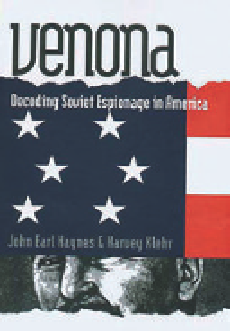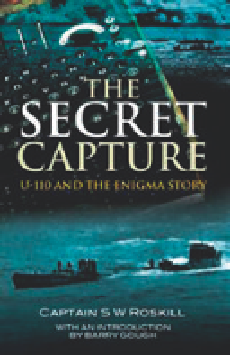Information Technology Reference
In-Depth Information
topics containing a month's supply of keys to each operator of the Enigma
code machine. For the U-boat fleet operating in the North Atlantic Ocean,
this was a major logistical challenge and also a critical vulnerability. Ian
Fleming, creator of James Bond, was a member of the United Kingdom's Naval
Intelligence Division during the war. He suggested a James Bond-style plan
called “Operation Ruthless” to capture the Enigma codebooks from a German
ship. Although this particular operation was never carried out, the Allies did
manage to capture intact Enigma codebooks from German weather ships and
U-boats, enabling them to learn the locations of the Atlantic U-boat packs
(
Fig. 12.13
).
The United States adopted the Data Encryption Standard (DES), a standard
method of coding messages, in 1976. The DES was based on a system devised
by the German-born cryptographer Horst Feistel, working at IBM's Thomas J.
Watson Research Center in New York. It is widely believed that the U.S. gov-
ernment only allowed 56-bit keys so that the DES system was safe enough for
normal users but not impossible for the NSA to break. Banks who needed to
send secure messages of detailed transactions to each other were major users
of encryption. To solve the problem of key distribution, banks employed dis-
patch riders who had to be thoroughly investigated and then equipped with
padlocked briefcases. The costs of maintaining such a system rapidly became
a major expense.
Fig. 12.12. The Venona project was a
U.S. counterintelligence program to
decrypt messages sent by the Soviet
Union's intelligence agencies. The secret
program was operational for more
than forty years. Its existence was only
revealed in 1995 after the end of the
Cold War. The program identified Klaus
Fuchs as the Manhattan Project spy who
gave the plans for the atomic bomb to
Stalin.
Diffie-Hellman key exchange and one-way functions
The way out of all these problems was to find a way for Alice and Bob to agree
on a secret key without ever having to meet, in spite of Eve trying to listen in
and discover the key. Remarkably, in 1976, agreeing on a secret key without
meeting was shown to be possible. In his wonderful account of ciphers and
cryptography,
The Code Book
, Simon Singh says of this new method of exchang-
ing keys, “It is one of the most counterintuitive discoveries in the history of
science”
10
and adds, “This breakthrough is considered to be the greatest cryp-
tographic achievement since the invention of the monoalphabetic cipher, over
two thousand years ago.”
11
The system that allows Alice and Bob to establish a secret key through
a public discussion is called the
Diffie-Hellman key exchange
, after the inven-
tors Whitfield Diffie and Martin Hellman (
B.12.6
). Hellman was a professor
at Stanford University, and Diffie enrolled as his graduate student so they
could both study the key distribution problem. Diffie and Hellman had real-
ized that the solution to the problem required the use of a mathematical
relationship called a
one-way function
. A two-way mathematical function is
reversible in that it is easy to undo; a one-way function, as the name implies,
is easy to do but very difficult to undo. Singh gives the following analogy:
“Mixing yellow and blue paint to make green paint is a one-way function
because it is easy to mix the paint but impossible to unmix it.”
12
We can use
this paint-mixing analogy to explain how Alice and Bob can establish a secret
key without Eve finding out, even though she is able to monitor their public
exchanges. We assume that each of the participants has a pot of yellow paint,
and Alice and Bob each have another pot with their own secret color. They
proceed as follows:
Fig. 12.13.
The Secret Capture
tells the
story of how the British destroyer HMS
Bulldog captured the German submarine
U-110. The British sailors were able to
retrieve the codebooks and an Enigma
machine from the submarine and
these were sent to the code breakers at
Bletchley Park.


Search WWH ::

Custom Search